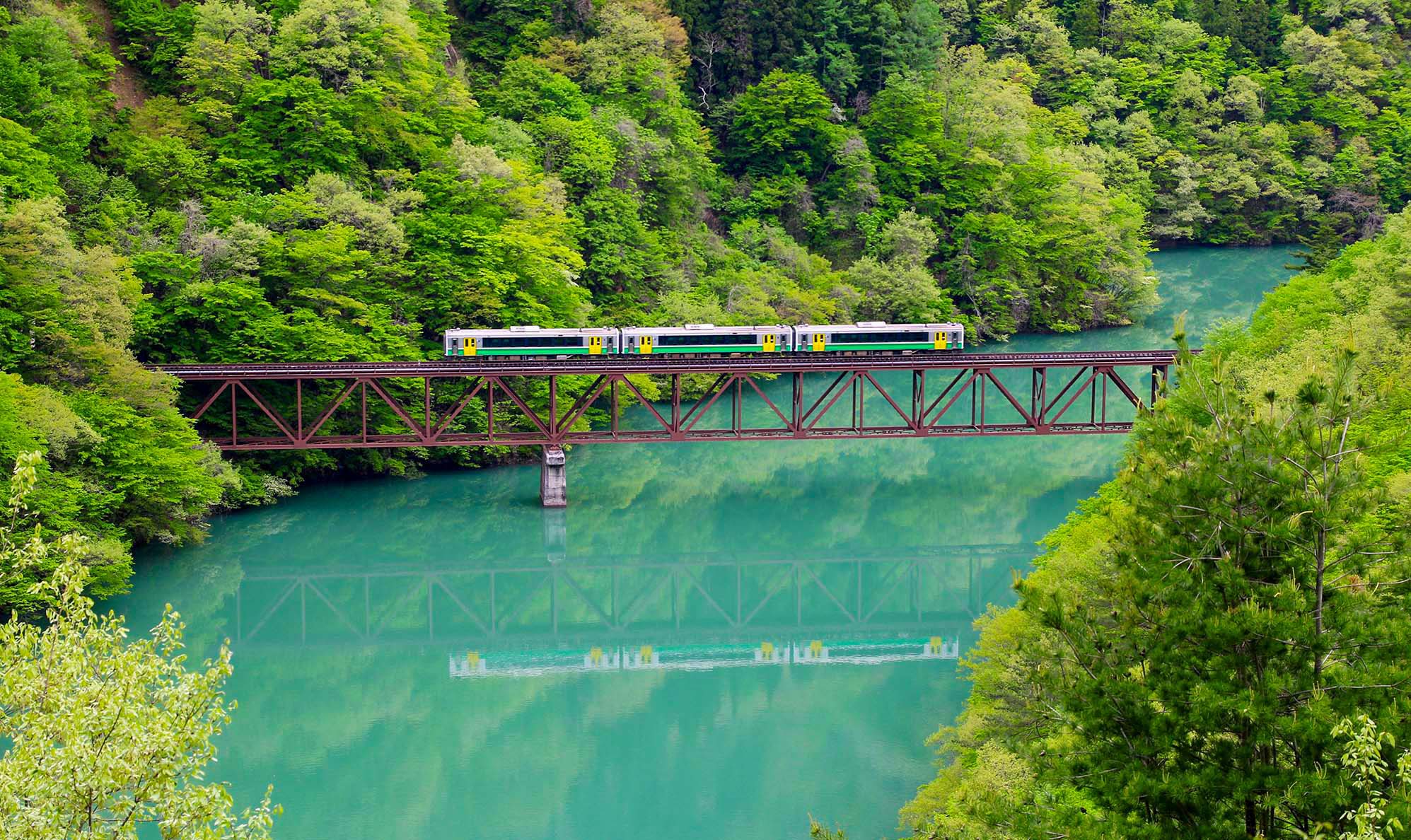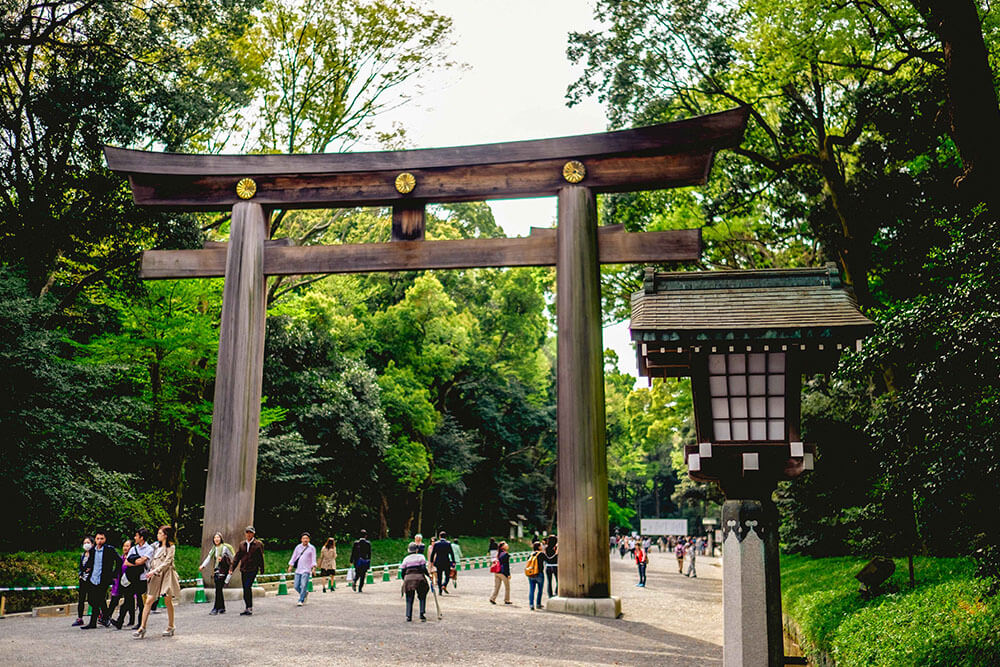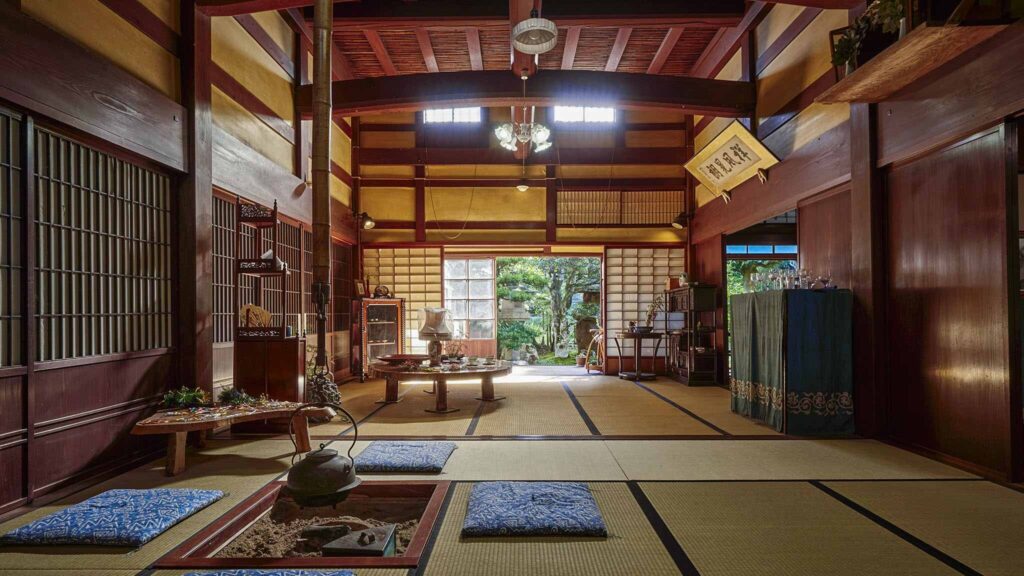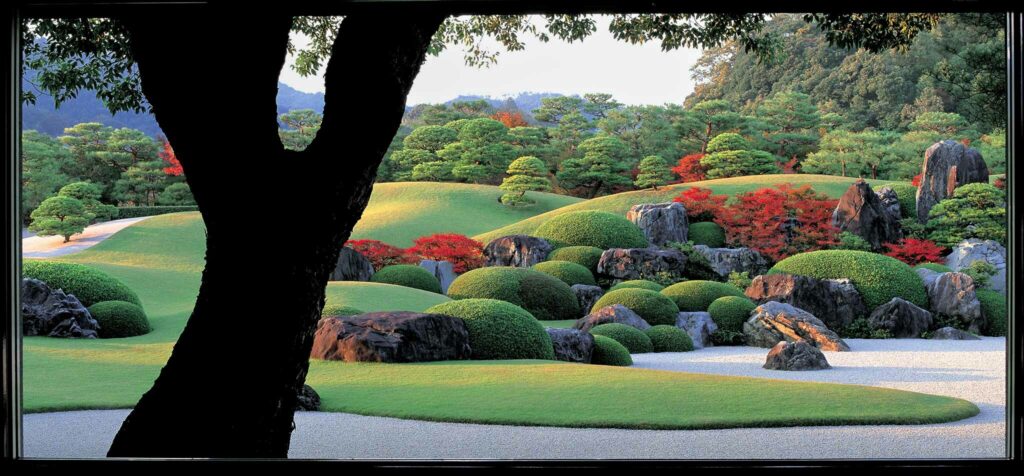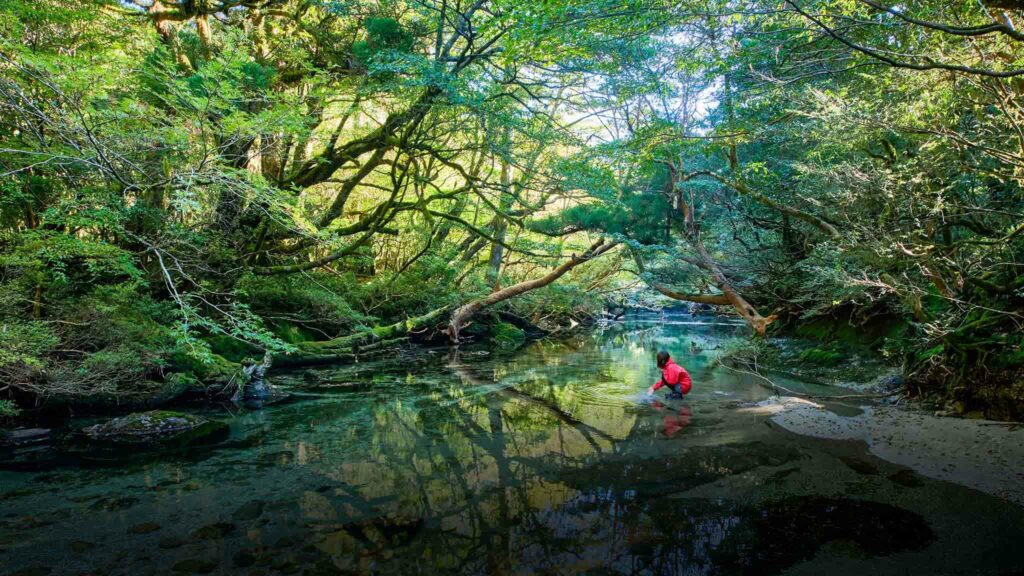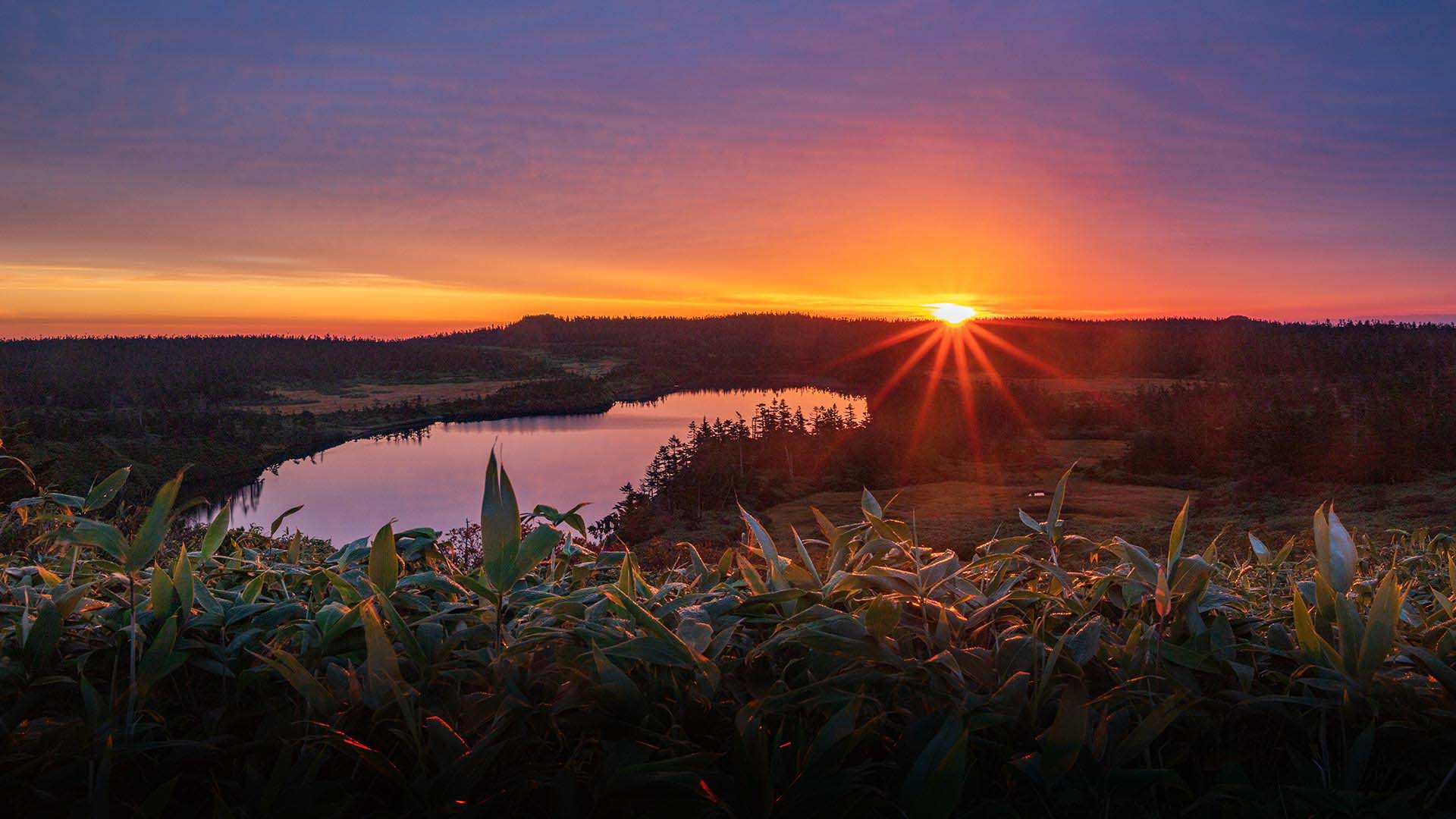
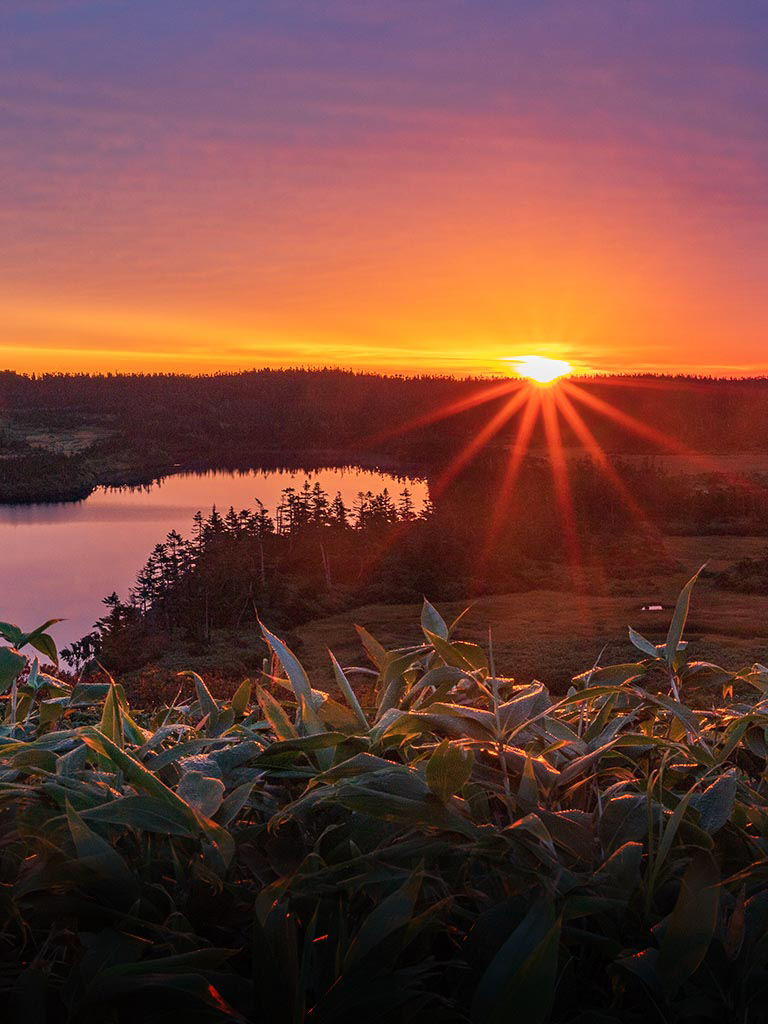
Nature for all Occasions
Experience the wonders of nature in Tohoku, where awe-inspiring peaks and tranquil lakes offer a haven for nature enthusiasts and
Tohoku ![]()
Tokyo surprises with its wealth of easily accessible nature destinations, including Mount Takao with its views of Mount Fuji and the beloved springtime cherry blossoms at Shinjuku Gyoen National Garden, but for those seeking a deeper dive into what Japan has to offer, an exploration of Tohoku is in order. In this rugged region north of the urban capital, travelers find an abundance of primeval forests, vast marshes, deep volcanic lakes and clear streams, as well as craggy coastal terrain and caves.
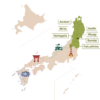
The Essence 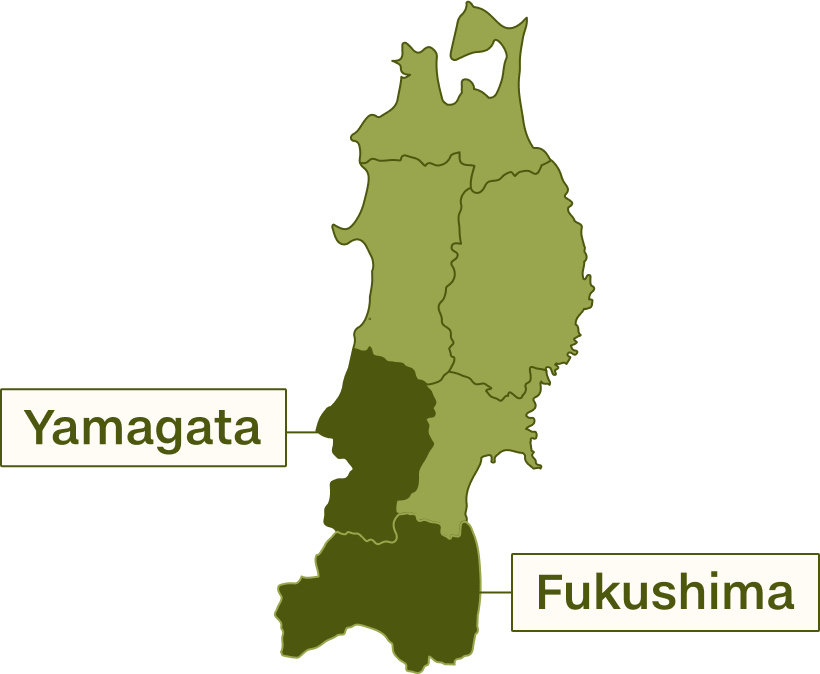
From babbling brooks and streams to dynamic coastal breaks and the calm depths of its lakes, water holds a significant presence in every corner of Tohoku. The region’s six prefectures have a multitude of aquatic destinations, each offering their own distinct charm.
Every spring, Yamagata Prefecture’s Lake Shirakawa—located upstream from Shirakawa Dam— transforms into a scene reminiscent of an impressionist painting. From mid-April to mid-May, the snowmelt from nearby mountains flows into the lake, and when it’s filled with water, it appears that the white yanagi trees are growing out of water. Known as “Suibotsurin”, or submerged forest, this natural phenomenon can be viewed up close from stand-up paddleboards, kayaks, and canoes.

To the south, Western Fukushima houses large swathes of Bandai-Asahi National Park and many of its best water features, including Goshiki-numa (Five Colored Ponds), a cluster of volcanic lakes created by an eruption of Mount Bandai in 1888. Because of the vast mineral deposits in the lakes, the color of the water is said to change according to time, season, and weather, giving them a mysterious aura. Visitors can hike around the lakes and ponds, or even visit on snowshoes in winter.


Seasonal Splendor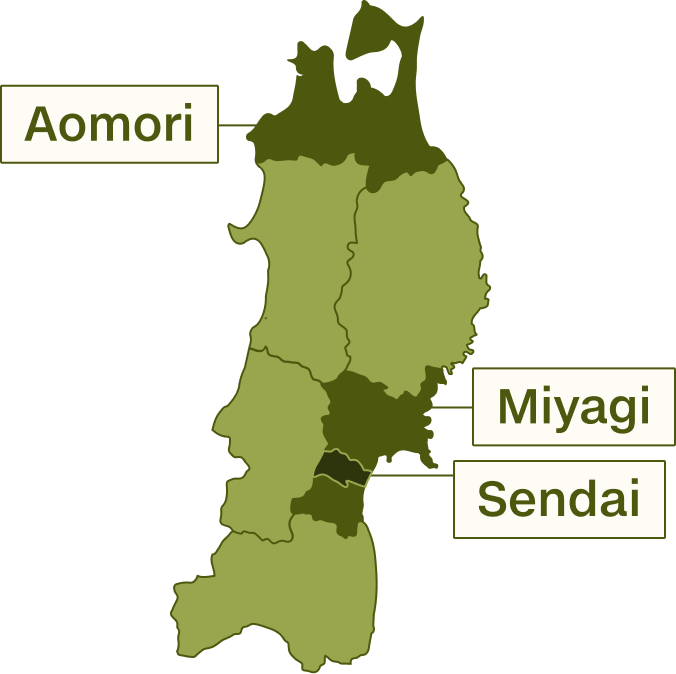
Japan’s seasonal changes are apparent throughout the country, but their contrasts are especially stark in Tohoku, where you can be fully immersed in the surrounding wilderness.
Marking the northernmost point of Japan’s main island of Honshu, Aomori is known as one of the world’s snowiest cities. It’s also home to Lake Towada, Honshu’s largest crater lake located near the prefecture’s southern border. This vast reservoir feeds its crystal-clear waters into Oirase Stream, which in turn meanders through Oirase Gorge’s untouched moss-covered forest beds. Keen hikers can wander through this mystical landscape along a trail that stretches 8.6 miles (14 kilometers) to the soundtrack of cascading waterfalls.

Further southeast, Miyagi Prefecture and its Pacific Ocean-facing shores serve up a cornucopia of seafood delicacies, including its famed oysters. For breathtaking scenery that evolves with the seasons, visitors should head northwest to Naruko Gorge, a verdant ravine that offers several walking trails and puts a brilliant display of vermillion, amber, and gold during fall from October to November.
For an equally impressive natural spectacle whose beauty changes throughout the year, visitors can make their way to the powerful waters of Akiu Great Falls, which is only 30 minutes from the center of Sendai, the largest city in the Tohoku region. Measuring 19 feet (6 meters) wide, these thunderous cascades plummet 180 feet (55 meters) into the pristine river below and are framed with lush greenery in spring and summer, brilliant reds in fall, and snow-covered rocks in winter.


A Rugged Landscape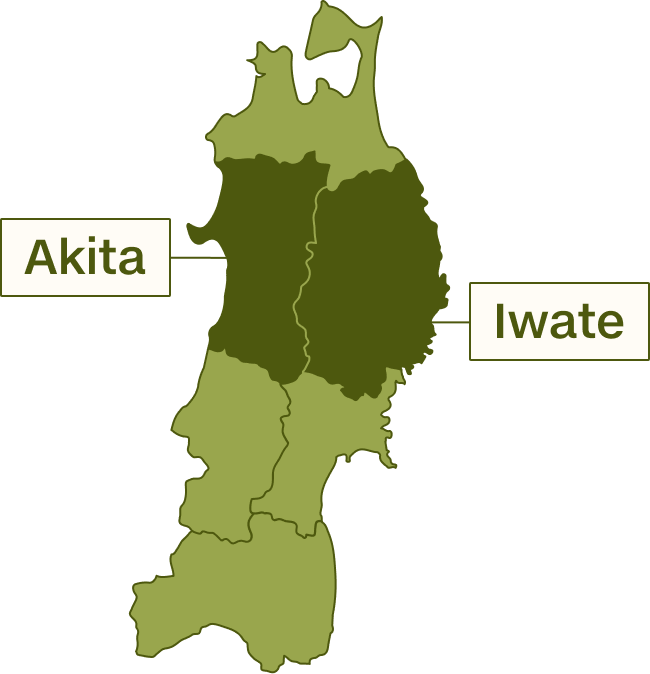
Tohoku’s many natural wonders, including rock formations and limestone caves, showcase the ancient history of the region and how it has developed through volcanic eruptions and coastal erosion.
Iwate Prefecture’s Ryusendo Cave, one of Japan’s three largest limestone caves and a national natural monument, is a ‘living’ cave with its own ecosystem—complete with resident bats—that stretches over 13,123 feet (4,000 meters) underground. About 2,296 feet (700 meters) of this is open to the public, allowing visitors to witness the brilliant blue waters of its depths. Cultural and educational events are regularly held at the cave with its stalactites and stalagmites illuminated in bright colors, creating a fairytale-like atmosphere.

Jutting out from the southwestern tip of Akita Prefecture into the Sea of Japan, Oga Peninsula maintains its close ties to deep folkloric tales of ogres and demons through its rugged terrain. Coastal rock formations such as the Oni no Tawarakorogashi Rocks (Ogre’s Rolling Bale Rocks) and the Oni no Ashiato (Ogre’s Footprints) depressions allude to Akita’s famed Namahage, a pack of demon-like characters in Japanese folklore and protagonists of the soul-stirring Namahage Sedo Festival, held annually on the second Saturday and Sunday of February at Shinzan Shrine.


With its remarkable geological history and diverse adventure experiences, Tohoku offers visitors a tapestry of breathtaking landscapes, ranging from volcanic peaks to limestone caves. Whether hiking through ancient forests or immersing yourself in the region’s cultural heritage, Tohoku promises an enchanting journey where wonders unfold at
![]() How to Get There
How to Get There
Getting from Tokyo to many of Tohoku’s fantastic destinations is easy, with options both by rail and air.
Depending on the prefecture, a domestic flight with ANA or JAL from Tokyo Haneda Airport to Tohoku only takes between 1 to 2 hours. Both airlines regularly offer promotions for international tourists, and their focus on omotenashi—the Japanese style of hospitality of anticipating the needs of customers to providing thoughtful service—ensures travelers continue to experience the essence of the destination while exploring the country.
For those who prefer to travel by rail, Japan’s bullet train can get you to several of the region’s travel hubs in approximately 1.5 to 4 hours.
Learn more about other journeys
